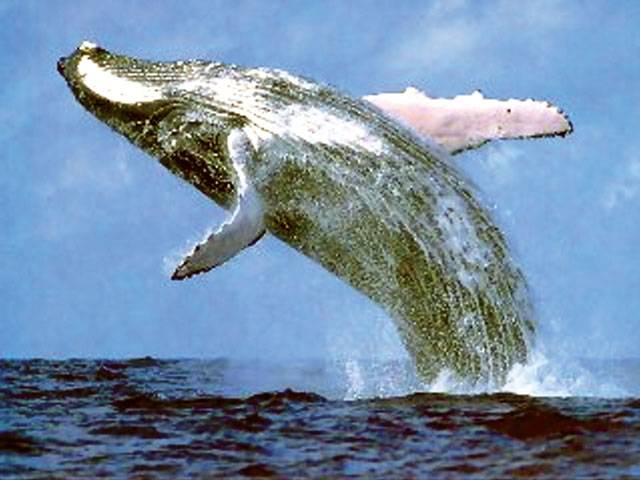SYDNEY (AFP) - An Australian-led group of scientists has for the first time tracked down and tagged Antarctic blue whales by using acoustic technology to follow their songs, the government said Wednesday.
The blue whale, the largest animal on the planet, is rarely spotted in the Southern Ocean but a group of intrepid researchers were able to locate and tag some of the mammals after picking up on their deep and complex vocals. Researcher Virginia Andrews-Goff said it was the first time acoustics have been used to lead researchers to the whales in real time, with those monitoring the whale noises working around the clock to pinpoint them. “The acoustics led us to the whales,” she told AFP. “They are quite, almost alien-like, deep resonating sounds. They are quite intense. Very interesting to listen to.”
Environment Minister Tony Burke said the researchers, who spent seven weeks working from small boats in freezing Antarctic conditions, were captivated by the remarkable behaviour of the whales they saw.
“The Antarctic blue whale can grow to over 30 metres in length and weigh up to 180 tonnes, its tongue alone is heavier than an elephant and its heart is as big as a small car,” Burke said. “Even the largest dinosaur was smaller than the blue whale.”
Andrews-Goff said the scientists were often out in boats only six metres in length, sitting alongside the 30-metre giants. “I felt like an ant next to one of these massive whales. They are huge,” she said.
The scientists collected 23 biopsy samples and attached satellite tags to two of the whales, giving them never-before obtained data on the animals’ movements during their summer feeding season and their foraging behaviour. “This method of studying Antarctic blue whales has been so successful it will now become the blueprint for other whale researchers across the world,” Andrews-Goff predicted.
She said while one tag stopped working after 17 days, the second was still working after two weeks, although erratically. “We know very little about Antarctic blue whales’ movement, we don’t really know migration patterns, we don’t really know if some animals migrate and some animals don’t,” she said. “We can assume that we know where the whales feed but by using these satellite tags we can actually see where they are spending a lot of their time and if that’s associated with environmental features like the sea ice edge. So the information that we can get from these tags is really useful.”
Wednesday, April 17, 2024
World’s biggest creature tracked by its song

3 killed in Malaysia accident laid to rest in Rustam
April 17, 2024
E-transfer policy in KP colleges soon: Minister
April 17, 2024
PPAF gives relief items among affected families in Gwadar
April 17, 2024
Minister directs to ensure fertilizers supply
April 17, 2024
Rail Revival
April 17, 2024
Addressing Climate Change
April 17, 2024
Saudi Investment
April 17, 2024
Political Reconciliation
April 16, 2024
Pricing Pressures
April 16, 2024
Workforce inequality
April 17, 2024
New partnerships
April 17, 2024
Shikarpur crisis
April 17, 2024
Peace quest
April 17, 2024
Democratic harmony
April 16, 2024
ePaper - Nawaiwaqt
Advertisement
Nawaiwaqt Group | Copyright © 2024





